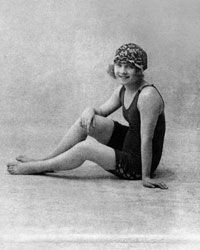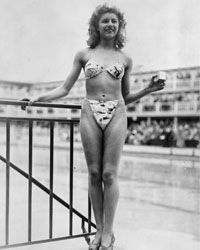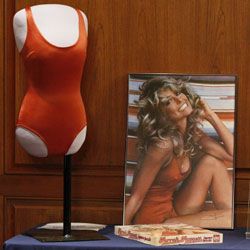
It may seem like nothing more than a swath of stretchy fabric. Not even a swath -- more like patch. It's lightweight, quick-drying and leaves little to the imagination.
The swimsuit's current form may seem unavoidable. It's tough to swim (or even wade) fully clothed. And yet, that's pretty much what women did for a hundred years or so; and before that, they may have worn nothing at all.
Advertisement
Here, some milestones along the winding road from nothing to everything and back again. It's a path with historical significance, tracing the evolution of sex, gender roles, cross-cultural influence, and the rush to lose 10 pounds before summer.
Which is all the more reason to give it up for the bold ladies of ancient Greece, so we'll start there …









